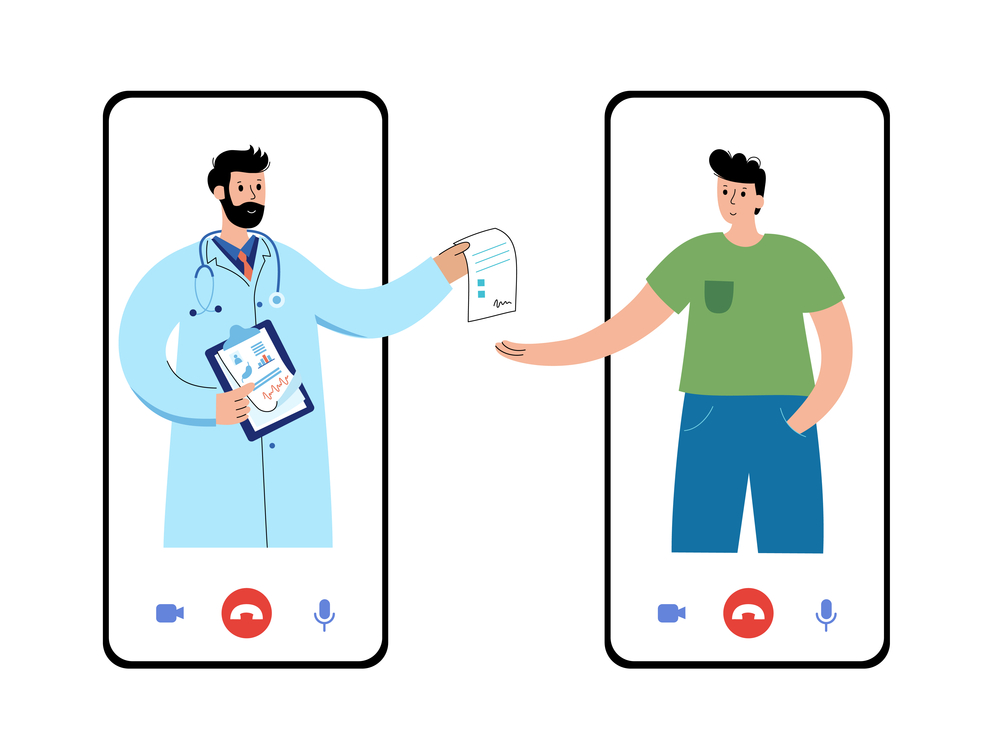This blog explores how telehealth is shaping the future of public health in New Mexico, the challenges and opportunities it presents, and the potential impact on the state’s healthcare system. Telehealth has rapidly transformed the landscape of healthcare, offering unprecedented access to medical services for people in both urban and rural areas. In New Mexico, a state characterized by its vast, often remote terrain, telehealth is proving to be a game-changer in public health. As we look toward the future, the integration of telehealth into public health initiatives presents an opportunity to revolutionize how healthcare is delivered, making it more accessible, efficient, and equitable.
The Current State of Public Health in New Mexico
New Mexico faces unique public health challenges, including a high prevalence of chronic diseases, mental health issues, and substance abuse. Additionally, the state’s rural and remote communities often struggle with limited access to healthcare services, exacerbating these health challenges. Key factors affecting public health in New Mexico include:
- Geographic Isolation
- Rural and Remote Communities: Many New Mexicans live in rural or remote areas, where access to healthcare providers is limited. The distances involved often make it difficult for residents to receive timely and consistent care.
- Transportation Barriers: For individuals without reliable transportation, reaching healthcare facilities can be a significant challenge, particularly for those with chronic conditions that require regular monitoring and treatment.
- Healthcare Provider Shortages
- Limited Access to Specialists: There is a shortage of healthcare providers in New Mexico, particularly in specialized fields such as mental health, cardiology, and endocrinology. This shortage leads to long wait times and limited access to necessary care.
- Strain on Local Healthcare Systems: The limited number of providers in rural areas often means that existing healthcare systems are strained, reducing the availability of comprehensive care for residents.
- Health Disparities
- Economic and Social Disparities: Economic and social disparities contribute to significant health inequities in New Mexico. Low-income residents, Native American communities, and other marginalized groups often face barriers to accessing healthcare, leading to poorer health outcomes.
- Chronic Disease Burden: New Mexico has high rates of chronic diseases such as diabetes, heart disease, and obesity, which are exacerbated by limited access to preventive care and health education.
The Role of Telehealth in Public Health
Telehealth is poised to play a central role in addressing the public health challenges faced by New Mexico. By leveraging technology, telehealth can help bridge the gap between healthcare providers and patients, offering new ways to deliver care that is both effective and accessible. Here’s how telehealth is shaping the future of public health in New Mexico:
- Expanding Access to Care
- Reaching Underserved Populations: Telehealth extends healthcare services to populations that have traditionally been underserved, including rural residents, low-income families, and Native American communities. By providing virtual consultations and remote monitoring, telehealth reduces the need for travel and ensures that more people have access to care.
- Specialist Access: Telehealth allows patients to consult with specialists who may not be available locally, ensuring that they receive the necessary care for complex conditions. This is particularly important in a state like New Mexico, where access to specialists can be limited by geographic barriers.
- Enhancing Preventive Care
- Early Detection and Screening: Telehealth facilitates early detection and screening for chronic diseases, mental health issues, and other conditions. By offering virtual health assessments and monitoring, telehealth can help identify potential health problems before they become serious, leading to better outcomes.
- Health Education and Promotion: Telehealth platforms can deliver health education and promotion programs directly to patients, providing them with the information they need to make healthier choices. This includes education on diet, exercise, smoking cessation, and other lifestyle factors that contribute to overall health.
- Improving Chronic Disease Management
- Remote Monitoring: For patients with chronic conditions such as diabetes, hypertension, or asthma, telehealth offers the ability to remotely monitor their health metrics, such as blood glucose levels or blood pressure. This ongoing monitoring allows healthcare providers to make timely adjustments to treatment plans and prevent complications.
- Medication Management: Telehealth enables healthcare providers to manage patients’ medications remotely, ensuring that they are taking the correct doses and monitoring for potential side effects. This is particularly important for patients with multiple chronic conditions who require complex medication regimens.
- Supporting Mental Health and Substance Abuse Treatment
- Accessible Mental Health Services: Telehealth has expanded access to mental health services in New Mexico, providing virtual counseling, therapy, and psychiatric consultations to individuals who may not have access to these services locally. This is especially important for addressing the state’s high rates of depression, anxiety, and substance abuse.
- Substance Abuse Support: Telehealth offers a valuable tool for supporting individuals in recovery from substance abuse, providing virtual support groups, counseling, and medication-assisted treatment (MAT) that can be accessed from anywhere.
Challenges in Integrating Telehealth into Public Health
While telehealth offers significant opportunities for improving public health in New Mexico, there are challenges that must be addressed to fully realize its potential:
- Technology and Infrastructure Barriers
- Broadband Access: Reliable internet access is essential for telehealth services, yet many rural areas in New Mexico lack adequate broadband infrastructure. Expanding broadband access is critical to ensuring that all residents can benefit from telehealth.
- Digital Literacy: Not all patients are comfortable using technology, which can be a barrier to accessing telehealth services. Providing digital literacy training and technical support is essential for helping patients navigate telehealth platforms.
- Healthcare Provider Adoption
- Training and Integration: Healthcare providers must be trained to use telehealth technology effectively and integrate it into their existing practices. This includes understanding how to conduct virtual consultations, manage remote monitoring data, and use telehealth platforms for patient education.
- Reimbursement and Regulation: Ensuring that telehealth services are reimbursed at comparable rates to in-person services and that regulations support the use of telehealth is essential for encouraging provider adoption and sustainability.
- Ensuring Equity in Access
- Addressing Disparities: Efforts to expand telehealth must prioritize equity, ensuring that underserved and marginalized populations have access to the necessary technology, education, and support to benefit from telehealth services.
- Culturally Sensitive Care: Telehealth services must be culturally sensitive and relevant to the diverse populations in New Mexico. This includes offering services in multiple languages and incorporating cultural values and practices into care delivery.
Strategies for Maximizing the Impact of Telehealth on Public Health
To maximize the impact of telehealth on public health in New Mexico, several strategies can be implemented:
- Expanding Broadband and Technology Access
- Broadband Infrastructure Investment: Continued investment in broadband infrastructure is essential for expanding telehealth access, particularly in rural and underserved areas. Public-private partnerships and government funding can help bridge the digital divide.
- Access to Devices: Programs that provide low-cost or free devices to underserved populations can help ensure that all residents have the tools they need to participate in telehealth.
- Integrating Telehealth into Public Health Initiatives
- Public Health Campaigns: Telehealth should be integrated into public health campaigns that focus on prevention, early detection, and chronic disease management. This includes using telehealth platforms to deliver health education, conduct screenings, and monitor patient outcomes.
- Collaboration with Community Organizations: Partnering with community organizations can help expand the reach of telehealth services and ensure that they are accessible to all residents. Community-based programs can provide education, support, and resources to help patients navigate telehealth services.
- Promoting Provider Adoption and Training
- Provider Education and Support: Healthcare providers should receive ongoing education and support to effectively integrate telehealth into their practices. This includes training on the use of telehealth platforms, best practices for virtual care, and strategies for engaging patients in telehealth services.
- Incentivizing Telehealth Use: Reimbursement models and regulations should incentivize the use of telehealth, ensuring that providers are compensated fairly for virtual care and that telehealth services are sustainable in the long term.
The Future of Telehealth and Public Health in New Mexico
The future of telehealth in New Mexico’s public health landscape is promising, with the potential to significantly improve health outcomes across the state. Key areas of focus for the future include:
- Comprehensive Public Health Programs
- Integrated Telehealth Services: Telehealth should be integrated into comprehensive public health programs that address the full spectrum of healthcare needs, from prevention and early detection to chronic disease management and mental health support.
- Population Health Management: Telehealth can be used to manage the health of entire populations, using data analytics to identify trends, monitor health outcomes, and target interventions where they are needed most.
- Advanced Telehealth Technologies
- Artificial Intelligence and Machine Learning: Future telehealth platforms may incorporate artificial intelligence and machine learning to provide personalized care recommendations, predict health risks, and support clinical decision-making.
- Wearable Devices and Remote Monitoring: The use of wearable devices and remote monitoring tools will continue to expand, allowing for more continuous and proactive management of chronic conditions and other health issues.
- Sustainable and Equitable Telehealth Solutions
- Long-Term Sustainability: Ensuring the long-term sustainability of telehealth services requires ongoing investment in technology, infrastructure, and training. Public-private partnerships and government support will be essential for maintaining and expanding telehealth in New Mexico.
- Equitable Access: Efforts to expand telehealth must prioritize equity, ensuring that all residents, regardless of their location, income, or background, have access to the care they need. This includes addressing disparities in technology access, digital literacy, and healthcare provider availability.
Conclusion
Telehealth is set to play a transformative role in the future of public health in New Mexico, offering new opportunities to improve health outcomes, reduce disparities, and increase access to care. By integrating telehealth into public health initiatives, expanding access to technology, and promoting provider adoption, New Mexico can create a more equitable and effective healthcare system for all its residents. As technology continues to evolve and access expands, the impact of telehealth on public health in New Mexico will only grow, leading to a healthier and more connected population.


